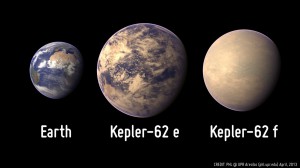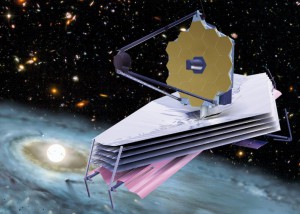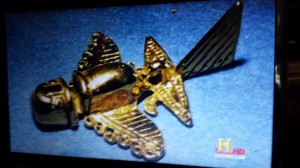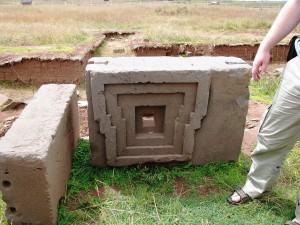Jacob, Liza: Secretary (Pro)
Grero, Naveen: Reporter 1 (Con)
Jaramillo, Edwin: Reporter 2 (Pro)
Lau, Kevin: Pro Debater
Pichardo, Teddy: Pro Debater
Rivera, Efrain: Con Debater
Zhou, Jiarong: Con Debater
Extraterrestrial and Biology
Naveen Grero, Lisa Jacob
Throughout history, humans have learned to associate the word extraterrestrial with aliens. Although that specifies to be technically true, extraterrestrial is also referred to anything that is outside of earth. Extraterrestrial is currently seen as one of the most controversial topics. There are two possible perspectives one can interpret when it comes to this topic: Either that there is lack of proof or that all work that men cannot possible do is only possible through extraterrestrials. Ancient civilizations observed and found by archeologist can give an insight to better understand this controversial topic.
During 1891-1898, a French archeologist unearthed a tomb containing the remains of Padi-Imen in Egypt, an official dating back to the early 2000 B.C. Among the various items discovered, a small bird shaped artifact made out of sycamore wood was found along with a papyrus scroll. The papyrus scroll, when translated, says: “I want to fly”. This artifact was called the Saqqara bird due to its origins in the Saqqara pyramid. After this artifact was found, it was placed with many other bird artifacts found in pyramids at the Museum of Egyptian Antiquities in Cairo. It was considered a mere toy that was most likely used by kids to play with. During 1969, however, an Egyptologist named Dr. Khalil Messiha noticed something unique about the Saqqara bird when studying bird shaped artifacts found by early archeologists from various diggings. What he noticed sparked many questions and theories on ancient Egyptians. He discovered that ancient Egyptians had the knowledge of modern aerodynamics and what baffled him most was how it was possible to create such highly developed gliders.
“I think that people in ancient times were visited by beings coming not from this earth and they give us culture and scientific technologies to improve our life on earth coming from primitive to a higher level culture,” stated Dr. Algund Eenboom (Ancient Aliens Season 1, Ep.1.)
Furthermore, Colombia, located 7,000 miles from Egypt, was famous for its legendary city of gold, Eldorado. Many treasure hunters believe that the city of gold lies hidden here somewhere in a thick canopy of trees in Colombia. During early 20th century two robbers searched around the Magdalena River, where they stumbled upon a gravesite that dates back 1500 years to a pre-Colombian civilization known as the Tollinna. From this gravesite, they found hundreds one to two inch figurines, “Many of those looked like insects, fish; however out of those hundreds of that they found, they also found dozens that an eerily reminiscent of modern day fighter jets. They have a triangular shape, they have an upright tailed fin, stabilizers and a fuse allege, and they have nothing in common with anything similar in nature,” said Georgio Tsoukalos (Ancient Aliens Season 1, Ep.1.) This quote states that there could be an indication of ancient civilization, such as ancient Egyptians and Pre-Colombian Tallinna, having the basic knowledge of modern aerodynamics.
Tall buildings and landscapes are seen all throughout the world today. To build these, however, multiple machines powered by hydraulics are necessary for lifting objects, weighting up to a ton, and moving them to a specified position. Yet thousands of years ago, ancient civilizations were able to build monuments, statues and temples with massive stone blocks, each weighing around hundred ton to two hundred tons. A prime example of this would be the pyramids. Each pyramid contains hundreds of those massive stone blocks. How is it possible to cut and shape those huge bricks using simple tools such as hammers, chisels and copper wire? How did they transport each hundred-ton brick from the quarry to the building area without wheels? And more importantly, how were they able to lift these massive stones to make the pyramid? Such questions still bemuse archeologists and Egyptologists.
“They [Ancient Egyptians] went to work every day using simple stone bolds, copper chisels or copper wires….. From what I have actually gathered over the years, the information, that seems to actually argue against the notion that they had simple tools” (Dunn, Christopher. Ancient Aliens Season 1, Ep.1). Dunn later examined ancient sites what he found was revolutionary yet controversial on the same time. When he was examining North of Giza, he found a granite block with a deep cut. “When I first saw it, I just didn’t know what to make of it, and it was only after puzzling over it for days and sometimes waking up at three o’clock in the morning scratching my head I’m thinking how they made this cut. And finally to realize that the only way they could cut that thing was with a saw that’s 35 meter in diameter.” Dunn even found these cut marks on statues and around many other areas where bricks were cut and used to build the pyramid.
Even though the theory on how the bricks were cut was determined, what still remains a mystery is how these hundred-ton bricks were transported from the quarry to the building site without wheels. Puma Punku, a large temple complex in Bolivia dating back to 2000 BC, is one example. “The interest of Puma Punku is not that the individual stoned it together perfectly, but the fact that the stones as such are tremendous design that require the concept of mathematics which are far beyond anything we are actually using right now.” (Coppers, Philip. Ancient Aliens Season 1 Ep.1). What’s more fascinating is that if you were to put enough pressure on the edges of the design in Puma Punku, you can cut yourself.

Kepler-62 e and Kepler-62 f orbits the orange dwarf star. These new planets are capable of sustaining life forms just like Earth and Mars once did in our solar system.
The newest studies show that there are more than 1000 planets are capable of sustaining life forms. But majority of them are not the right size, a gaseous state like Jupiter, or the right location for humans to live. Sure enough, NASA’s planet hunting telescope has found two new planets, Kepler-62 e and Kepler-62 f, orbiting the orange dwarf star. These two planets are supposedly capable of sustaining life forms just like Earth and Mars once did in our solar system. Moreover, living in these planets is stated to be not too cold and not too hot for liquid water. Even though the planets are twice as the size of earth, this is considered a huge discovery for the human species.

Nasa has revealed that during 2018, they will be releasing the JWST – a telescope so advanced, it is capable of detecting water and oxygen from outer space, among other capabilities.
NASA has also revealed that during 2018, they will be releasing the James Webb Space Telescope (JWST), a telescope so advanced, it’s capable of detecting water and oxygen from outer space in a planet that’s been orbiting a white dwarf. The JWST is also capable of detecting biomarkers such as oxygen and methane, which could possibly indicate that life exist beyond our earth. “Biomarkers will indicate about the presence of life,” says professor Dan Maoz. That’s a huge step in discovering whether we are the only living beings or whether we aren’t as along as we think we are.
Clearly, there are points that prove of extraterrestrial beings existing, though not scientifically. For instance, if we consider the theory on ancient civilization having the complex knowledge of modern aerodynamics, why haven’t we found any written records of such knowledge? Or why haven’t we found any evidence about gliding crafts created by ancient Egyptians. Also, in reference to the Pre-Colombian figurines that were found, Georgio from Ancient Aliens explains that most of the figurines are fishes and insects and amongst those, a dozen of them do not look like anything from earth. The issue I have with his statement is, why would pre-Colombian civilians mold gold into the shape of “modern day fighter jets” and place it in the category with other moldings of animals and insects? It simply could be a pre-historic animal that has yet to be discovered, or simply a molding done by Pre-Colombians for fun. Just because the figurine resembles a fighter jet does not mean there was a presence of a space ship.
When it came it building the pyramids, 20,000 laborers were responsible for that construction. With such a high number of laborers, it’s normal to assume that the building of the pyramids was possible without any help of extraterrestrials.
The pictures above show how the ancient Egyptians moved the big rocks from one place to another. During this period, wheels were not yet created but the movement of these heavy bricks was possible with the help of more than 200 laborers. While around 200 pulled strings from the front, two laborers were in the back pushing using two meters long stick to give a little steadiness while four more laborers picked up and placed cylinder-shaped wood panels on the bottom for the stone to roll easier. According to the deep cuts Christopher Dunn found around many pyramids, he mentions that the only way to do so is by the 35meter in diameter length saw. If so, why haven’t we found the 35meter in length saw yet? Theories stating that extraterrestrials helped humans are just that, theories. Without any evidence, they will continue to remain theories instead of proof.
The issues that arise from the two planets that have been discovered is that dozens of researchers who co-authored the study are still in the debate on which planet, out of the two, is more suitable for sustaining life. There is also the possibility that other life forms could exist on either of those planets. “This is the first one where I’m thinking ‘Huh, Kepler-62-f really might have life on it,” states David Charbonneau of Harvard. “This is a very important barrier that’s been crossed. Why wouldn’t it have life?” The other issue about these planets is the fact that its 1,200 light years away from planet earth. A light year is 6 trillion miles. To travel just 1 light year, at 157,000 miles, the speed of the fastest unmanned spacecraft, would take 4,250 earth years. So 6 trillion miles times 1,200, times 4,250, well, you do the math. It would take millenniums to just get there, let alone explore it.
The JWST project has many hopes on proving the existence extraterrestrial life. Sending the telescope to the planet that’s revolving around a white dwarf star has many complications, since, seeing as has white dwarf starts have a shorter life span, it would be dead by the time the telescope. According “NASA’s James Webb Space Telescope to Find Life on Other Planets”, professor Avi Loeb says, “In the quest for extraterrestrial biological signatures, the first stars we study should be white dwarfs.” Finding out more about white dwarf starts, especially how long they last before fading away, could play a crucial role in depicting further actions to take.
Determining whether extraterrestrials exist is dependent on us humans. What could be a spaceship flying by to one person, could be deemed as a hallucination to another. Since there are believers and skeptics, it’s impossible to say that all will accept even the slight possibility of other life form on other planets. As more theories will arise, so will more criticism. Some will say it goes against their moral to believe in other living being, as they see humans being the only higher soles, some will say it goes against God to believe that he would create other creatures, and some will say it goes against science, as there is no valuable proof to back up the possibility of extraterrestrials. It’s because of these ongoing issues that extraterrestrials are considered to be a controversial topic.
Work sited
Kevin Burns. Ancient Aliens Season 01 Episode 01. May 25th 2010
Fox News. Perfect planets for life? Telescope sees distant world snot too hot, not too cold, and not too big. April 19th 2013.
Ingela Maledevic. NASA’s James Webb space telescope to find life on other planets. April 25th 2013.
Outline for Presentation (evidence is within the article above)
PRO:
– Two new planets, Kepler-62 e and kepler-62 f, are supposedly capable of sustaining life forms like Earth (and Mars once did in out solar system). Not too cold and not too hot for liquid water (vs. Titan below).
-Ancient infrastructure (e.g. Egypt) was too advanced for the primitive tools then. There must have been some sort of help from life outside Earth.
-A stone dating back to 2000 BC in Bolivia has tremendous designs so perfectly that it requires mathematics which is far more advanced than what we are using currently.
-Europa and Titan: Moons with Life. Europa is covered with ice, but tidal heat could keep the inside of Europa warm enough to have warm water under the layer of ice. Therefore there can be organic compounds in the water. Titan (largest moon for Saturn) has a atmosphere made up of nitrogen. A rich assortment of organic molecules is found in Titan’s atmosphere, as products of the ammonia/methane chemistry. The mixture includes hydrogen cyanide, a compound in the path to the synthesis of amino acids. This finding has led to speculations that primitive life forms might be present. http://earthguide.ucsd.edu/virtualmuseum/litu/10_3.shtml
CON:
– It is normal to assume that with an enormous amount of people were responsible for the building of the pyramids without the help of the extraterrestrials.
– Titan has a higher surface pressure than earth but is extremely cold. Although there is chance for ET life there, it is unlikely because of the extremely low temperatures.
– It is just theories that extraterrestrials helped humans. Without any evidence, they will continue to remain evidence, not proof.








